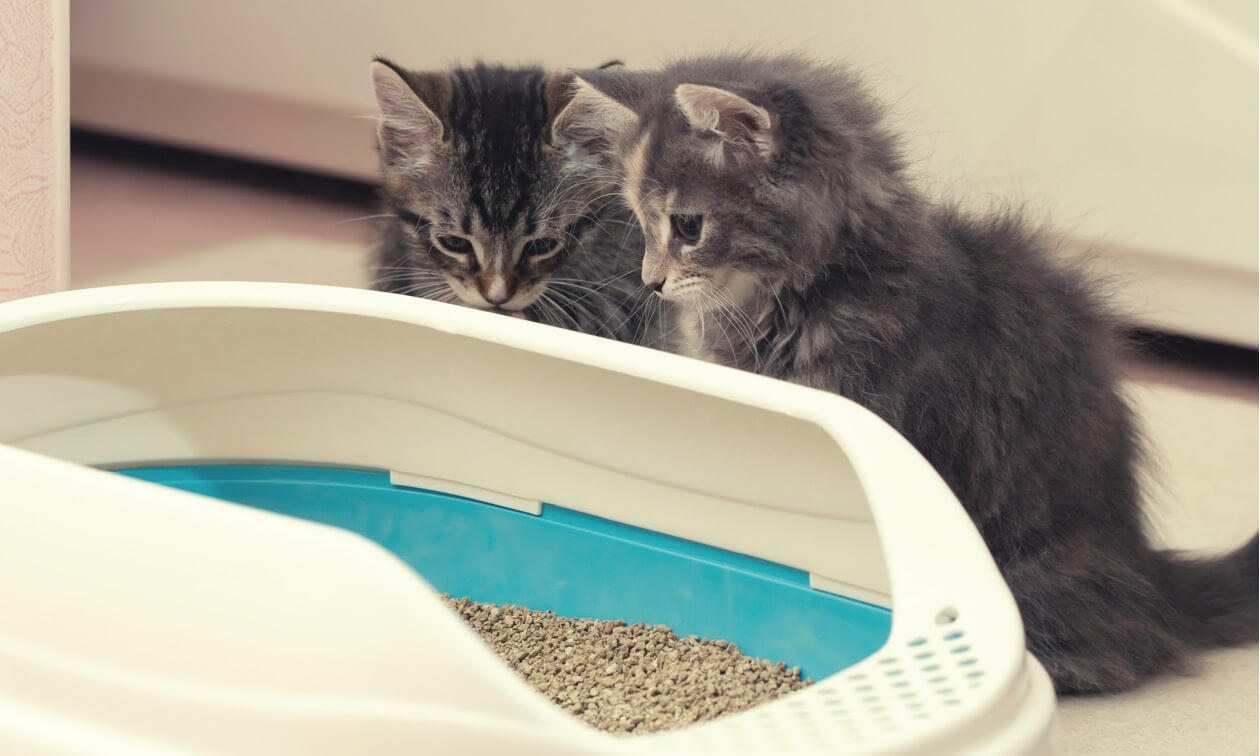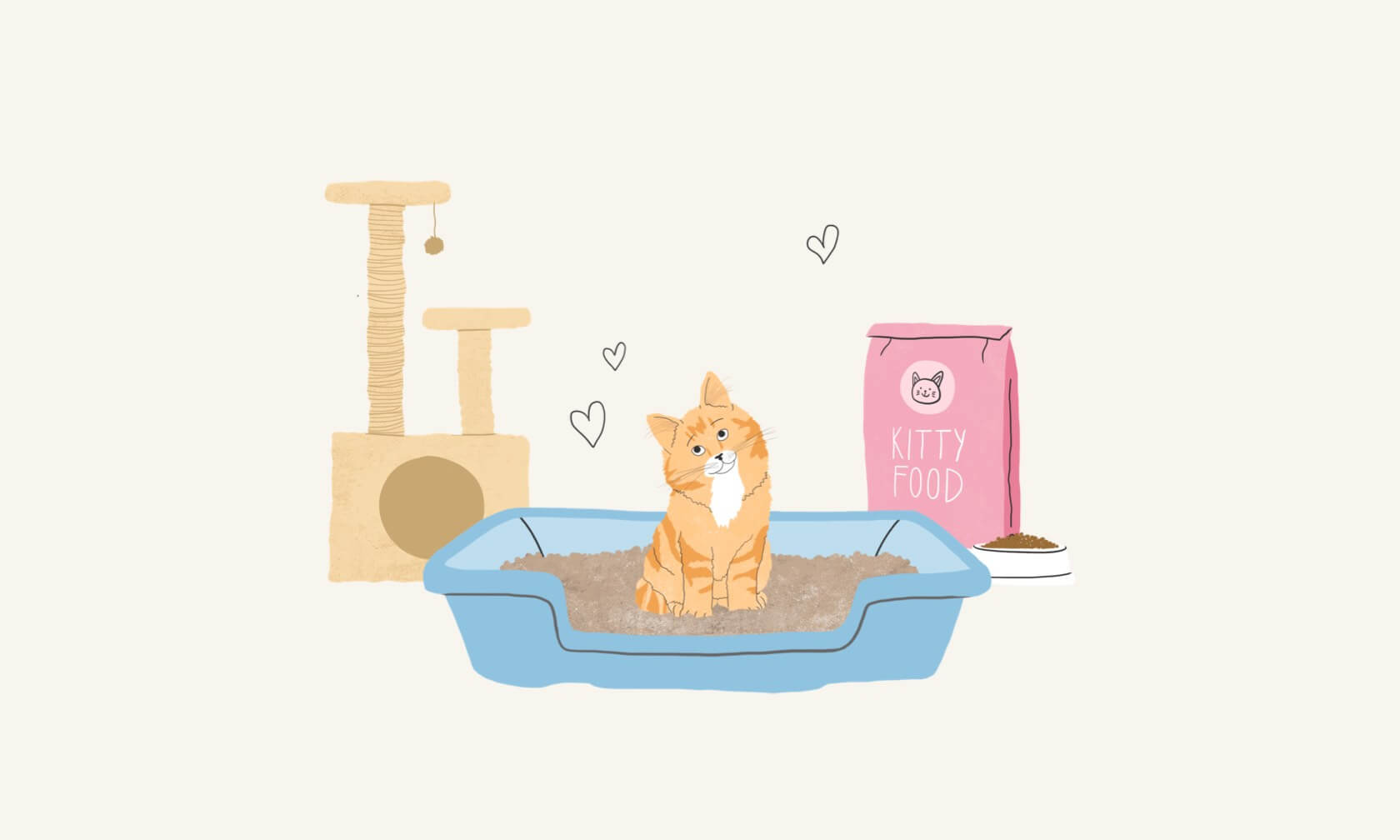If you’re bringing home a very young kitten, you probably have questions. One of the first is whether you need to litter train them or not. How should the litter box be set up? What kind of litter should you use? How often should the litter box be cleaned?
Litter boxes may not be the most fun things to have around. But, if you have a cat, they are 100% necessary! And knowing how to create the best litter box environment for your new kitten is more than half the battle with litter training.
Do Kittens Need Litter Box Training?
If you are worried about how to litter train a kitten, have no fear. Believe it or not, kittens generally don't need much training to use a litter box. Cats instinctively seek out soft, diggable substrates in which to “do their business.” Being able to bury their pee and poop, blocking the scent, is one way they avoid predators in the wild. Kittens are born with this intuition and, in most cases, will also see and imitate their mother’s behavior, whether it’s in a litter box, sandbox, or garden.
The key to awakening this instinct, especially in kittens who don’t have a mother to learn from, is to provide a litter box that fully meets their instinctual needs. The rest pretty much takes care of itself, in most cases.
Setting Up the Perfect Litter Box for Your Kitten
Litter training a kitten is easier when you implement some basic litter box rules. You just need to make a few adjustments for your kitten(s) as they grow into adulthood.
Location Do's
Kittens have tiny legs and may not be great at “holding it.” So, litter boxes need to be located where your kittens are spending their time. Depending on the number of cats, age, and how much room your kittens have to roam, you might need multiple litter boxes, so they don’t have to travel too far to find one or worry if one cat is blocking access to the box. As they get older, the golden rule is one more box than the number of cats. That’s not necessary for a litter of kittens, but it is if you’re bringing a kitten or two into a home with other cats.
Location Don’ts
Avoid putting the litter box near anything that could startle your kitten or drive them away. Washing machines, air purifiers, floor air vents, busy doors, and more can make noises, cause drafts, or create vibrations that make a kitty think twice about whether or not they feel safe using that litter box. Too many distractions can also be an issue. Cats instinctively avoid eliminating near fresh food and water sources, so put some distance between the litter box and the food and water bowls.
Litter Box Size
Kittens need smaller, shallow litter boxes. Look for a box designed specifically for kittens. If the litter box is hard to get in and out of, your kitten will look for an easier option. As they grow, you’ll need to transition to larger litter boxes.
Litter Type
Use non-clumping litter until your kitten is at least three months old. Kittens are notorious for eating litter, and the clumping type is particularly dangerous. Some people prefer pellet litter, so there’s even less chance of ingestion. As they get older, you can slowly transition to fine grain litters if you, and they, prefer. Finally, always avoid scented litter, and try to use low-dust options.
Litter Amount
Two inches is a good benchmark, though smaller kittens may do better with less.
Cleaning
Scoop the litter box every single day to keep it from smelling. If you have more than one kitten, you might need to clean it more often. Add more litter after scooping, as needed. Dump all the litter, clean the box, and start fresh once a week. Stick to soap and water and avoid any harsh cleaners or bleach.
Light
Contrary to popular belief, cats cannot see well in heavy darkness. Make sure you leave a light on or use a nightlight so your kitten feels safe using their litter box and can see what they’re doing.
Litter Training Your Kitten
Often, just showing your kitten the litter box is enough. But if they’re having trouble grasping the concept on their own, don’t worry. You can help by simply setting them in the box and digging around with your finger. They’re going to be intrigued by this experience, which should help trigger the instinct.
You can also try setting them gently in the box right after eating and drinking or when you see signs they need to pee or poop. If your kitten is under four weeks old, you’re probably still stimulating them to go — give a tiny bit of stimulation if needed and then place them in the litter box. For older kittens who are already peeing and pooping on their own, avoid scooping them up mid-stream and moving them into the box. Look for early cues like crying and scratching at blankets (or whatever they’re resting on). If you catch them in time, you can set them right in the box before they start “going.”

What To Do If Your Kitten Won’t Use the Litter Box?
If your kitten seems to understand the idea of the litter box but still won’t use it consistently, it’s time to be a detective. Cats who soil outside the litter box are trying to tell you there’s something wrong medically, emotionally, or with the litter box set up. In many kitten cases, it’s going to be the latter. Start there and take another look at your setup.
Is the box hard to get in and out of? Too much litter or not enough? Maybe the location isn’t right, or there are too many distractions. These are just a few of the questions to ask. There’s probably something about the litter box setup and environment that isn’t making it the perfect pee spot, so they’re going elsewhere to try and meet their needs.
If your setup looks good and your changes aren’t making a difference, it’s time for a visit with your veterinarian to rule out medical issues.
From there, a certified feline training and behavior consultant may be your best option to help litter train your kitten. Not only can they give you expert advice on setup and training tips, but they can also help identify emotional triggers. Perhaps your kitten is fearful or anxious. If they experienced pain when using the litter box, they might have a negative association that needs to be reversed. A qualified professional can often help find those issues and show you how to resolve them.
ZPC-01833R1



